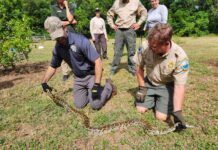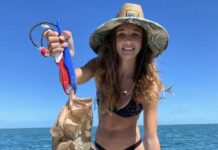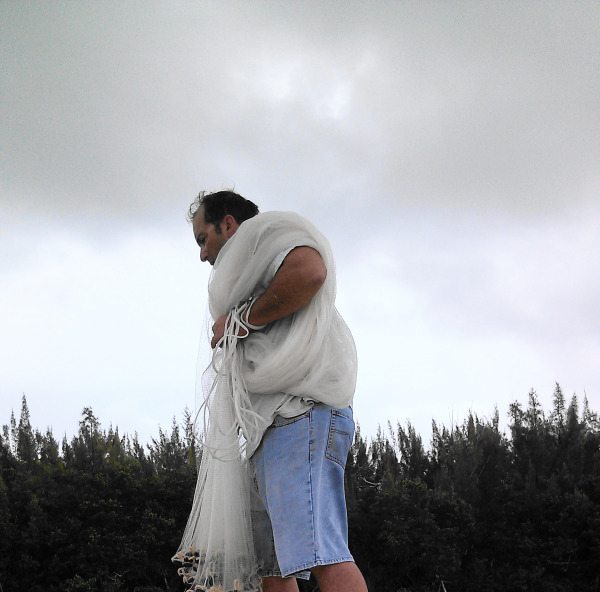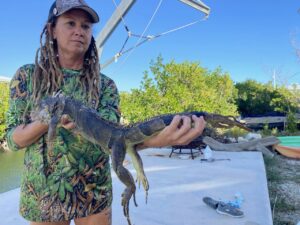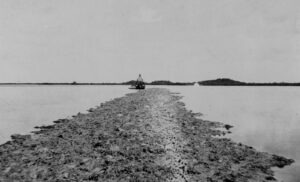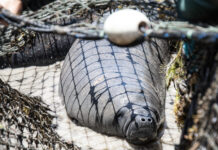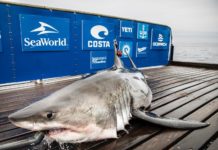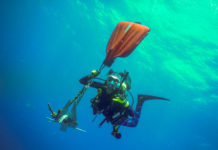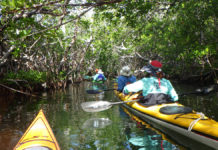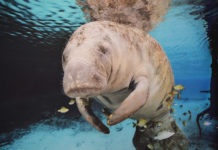The summer season is drifting away and the tourists are gathering for their yearly migration south to the Florida Keys for winter. For charter boat captains this can mean only one thing: It’s time to drag the live wells out of the shed and start getting ready for another live bait season. As much as I look forward to pitching live pilchards to tunas, I am not crazy about all the extra work involved to make it happen. I guess if it were easy it wouldn’t be a challenge.
There are some things you can do and some you must do to make live baiting a success. The three most common means of obtaining live bait are with a cast net, a “Sabiki Rig” or a fist full of cash. If you choose to do it yourself, you are going to need a lot of stuff.
The Sabiki rig is a chain of very small hooks, each with a piece of synthetic fish skin. It is weighted and cast near bouys and structures to catch small baitfish such as herring and small jacks. This method is very effective for catching “hook baits” or baits that will actually be put on the hook instead of used for live chum. Generally they are a little larger. It is always a good idea to keep a dehooker to remove the bait from the hook without touching it. This adds to the baits longevity and liveliness. Make sure you keep cast nets and sabiki rigs on opposite ends of the boat. Getting a sabiki tangled in a cast net would be a basket weaver’s nightmare.
The third method is to purchase your bait from a bait boat, an expensive and sketchy move because anglers are now at the bait man’s mercy. If he has promised it to someone or doesn’t have it, you are out of luck. I have seen a dozen goggle eyes sell for more than $150 on the morning of a tournament. One barracuda can chew a large hole in your wallet at that rate.
Now that we have some bait where do we put them? The live well is a signature contraption, which is nearly an art form to many of us. Everyone has a favorite setup and of course the other guy’s well is junk. The one thing we will all agree on is FLOW. You need lots of water. I can’t stress that enough. This is one area where size really does matter. Big pumps and big wells with big hoses and big everything. If you buy something for a live well, get the biggest one they make. Get it?
At bare minimum, anglers need a 50 gallon well, big enough to hold enough bait to last a half-day or so. An 1,100 gallon per hour pump should be enough and a two-inch overflow will exhaust the water pretty well. How you set it up is something only you can decide. Every boat and well is different and often the best method is trial and error. It can be frustrating.
You’ll need something to hold your bait in while you are at the dock. This requires a very large pen usually made from mesh and PVC pipe. They are cumbersome and awkward but until we develop a better system for keeping upwards of 2,000 very scared baitfish alive overnight without running pumps on the boat all night, you are going to need some zip ties and a hacksaw…
Why do we go through all of this aggravation to have live bait on our trips? That’s easy, because it works. Watching a sailfish eat live bait on the surface is something few get to see but will never forget. Tuna exploding behind the boat on the live chum is absolutely insane. Its what keeps us guides going.
If you are planning to charter a boat while you are in Key West and the captain has live bait for you, there was a lot of behind-the -scenes work that went into it. You can surely catch some good fish on dead bait, but the live ones are fool proof. If they won’t eat live bait then they just aren’t hungry. If you want to see it first hand, look me up. Otherwise, I hope to see you out there and good luck.
Vinny Argiro has been chartering in Key West since 1989. His number is 305-849-2367 and website is captvinny.com








